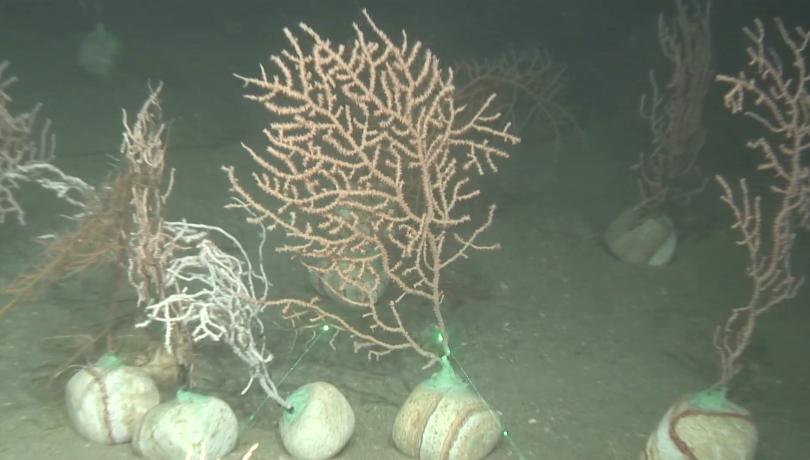The organisms had been caught accidentally and have been recovered in aquariums installed in different fishermen's associations.

LIFE ECOREST has released over 250 organisms accidentally caught in fishing nets and rescued by fishermen. These organisms have been recovered in the aquariums installed in different fishing communities.
Specifically, 143 gorgonians belonging to the species Eunicella cavolini, Eunicella singularis, and Leptogorgia sarmentosa, as well as 106 soft corals of the species Alcyonium palmatum and some bryozoans, were returned to the sea. The organisms were released into the natural environment in Vilanova i la Geltrú, Palamós, and Arenys de Mar at depths ranging from 90 to 140 meters. In addition, in Vilanova, the survival success of these organisms was verified by observing, through a remotely operated underwater vehicle (ROV), that the gorgonians had correctly settled on the seabed.
This action was carried out during the project's second oceanographic campaign, involving research teams from the Institute of Marine Sciences (ICM-CSIC) and the University of Barcelona. The main objectives were to gather information about the seabeds in the 15 fishing restricted areas, which are the project's target zones, and to release the recovered specimens at the fishing associations.
Throughout a month-long campaign, 34 dives were conducted using an ROV to visually inspect these areas, covering a linear distance of 80 kilometers and nearby control zones.
In a preliminary assessment, the scientific team has observed differences between the current fishing zones and those under a fishing ban for over a year. In the former, the seafloor is smoother and shows marks from fishing gear, whereas in the protected areas, a natural three-dimensional structure has been observed, created by the diverse fauna inhabiting the seabed, which is also more abundant.
Images for monitoring
During the first campaign, which took place in October 2022, the scientific team deployed a Lander, a structure equipped with a camera and various environmental sensors. This quantitative and non-invasive sampling system is positioned on the seabed and operates autonomously for different intervals. In this case, the Lander remained anchored in a soft substrate zone for approximately six months and was recovered during this second campaign. Its mission was to capture images of the seafloor every 30 minutes, which will be processed and analyzed by the scientific team in the coming months to understand temporal dynamics and interactions between different species.
In upcoming campaigns, the monitoring of the released species in the reserve areas will also be conducted through video footage, using both an ROV and an autonomous underwater vehicle (AUV). The next campaign will take place this month of June to redeploy the Lander, continue the release of organisms collected from different fishing associations, and explore the 15 restricted zones, this time using an autonomous vehicle.
LIFE ECOREST
In the project's target area along the coasts of Barcelona and Girona, it is estimated that over 90% of the seafloor between 50 and 800 meters deep shows signs of degradation, hindering the regeneration of natural resources. This area is considered ecologically significant due to the high concentration of endangered, threatened, or vulnerable species, including corals and gorgonians.
Therefore, until 2026, the action program of the LIFE ECOREST project aims to improve the conservation status of deep-sea habitats and demonstrate the effectiveness of participatory management involving the fishing sector.
This initiative, coordinated by the ICM-CSIC, has partners such as the Federation of Fishing Associations of Girona, the Fundación Biodiversidad of the Ministry for Ecological Transition and Demographic Challenge, the University of Barcelona, and WWF Spain. It is also financially supported by the LIFE Program of the European Union.